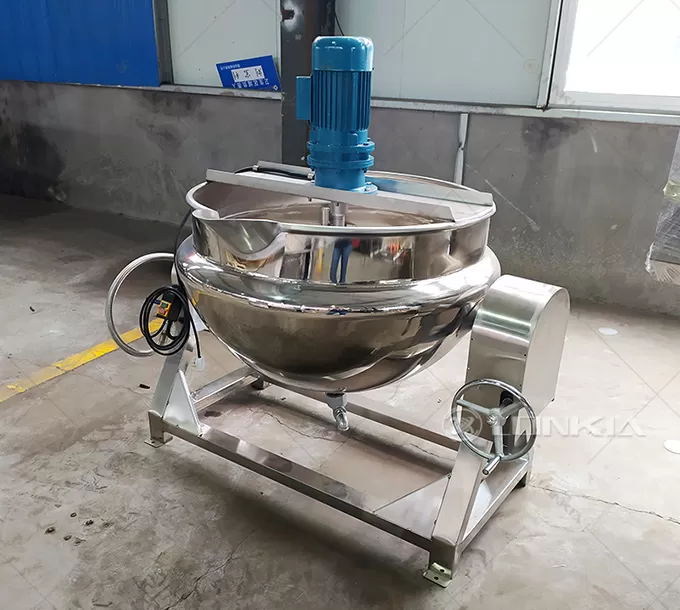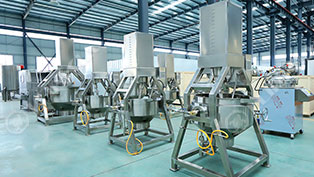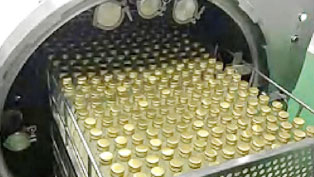In the fast-paced world of commercial food production, efficiency is key to maintaining high output, consistent quality, and cost-effectiveness. Traditional cooking methods often require multiple steps, extensive labor, and time-consuming processes, leading to bottlenecks in production. This is where a cooker mixer comes in—a multi-functional solution that combines cooking, mixing, and automated control into a single machine, streamlining food processing operations.
In this article, we’ll explore how a cooker mixer enhances efficiency in commercial food production and why it has become an essential tool in large-scale food processing.
1. Streamlining the Cooking and Mixing Process
The Challenge:
In traditional food processing, cooking and mixing are often performed separately, requiring multiple machines and manual labor. This not only slows down production but also increases the risk of inconsistencies in texture, flavor, and cooking temperature.
✅ How a Cooker Mixer Helps:
- Combines heating and mixing in one unit, eliminating the need for separate equipment.
- Provides uniform heat distribution, ensuring even cooking and preventing scorching.
- Reduces processing time by allowing continuous operation with precise control.
- Result: Faster production cycles, reduced manual handling, and improved workflow efficiency.

2. Enhancing Product Consistency and Quality
The Challenge:
Achieving consistent texture, viscosity, and flavor in large-scale food production is difficult, especially when using manual mixing and heating methods. Variations in temperature, mixing speed, and ingredient distribution can lead to batch inconsistencies, affecting product quality.
✅ How a Cooker Mixer Helps:
- Uses automated mixing and temperature control to maintain precise cooking conditions.
- Ensures homogeneous blending of ingredients, improving texture and consistency.
- Reduces batch-to-batch variations, leading to higher product uniformity.
- Result: Standardized quality across all batches, essential for branding and customer satisfaction.
3. Reducing Labor Costs and Manual Effort
The Challenge:
Manual food processing requires a large workforce for stirring, monitoring, and transferring ingredients, leading to high labor costs and potential errors.
✅ How a Cooker Mixer Helps:
- Automates mixing and stirring, eliminating the need for constant human supervision.
- Allows one operator to handle multiple tasks, reducing overall labor costs.
- Improves workplace safety by minimizing exposure to high temperatures and heavy lifting.
- Result: Lower labor expenses, improved efficiency, and safer working conditions.
4. Optimizing Energy and Resource Utilization
The Challenge:
Conventional cooking systems often lead to excessive energy and resource consumption, increasing operating costs.
✅ How a Cooker Mixer Helps:
- Uses energy-efficient heating elements to reduce fuel and electricity consumption.
- Incorporates vacuum technology (in some models) to lower cooking temperatures and save energy.
- Reduces water and ingredient waste by maintaining precise control over cooking parameters.
- Result: Significant cost savings and a more sustainable food production process.
5. Expanding Production Capabilities
The Challenge:
Scaling up food production requires additional equipment and infrastructure, increasing capital investments.
✅ How a Cooker Mixer Helps:
- Handles a wide range of food products, from sauces and soups to confectionery and ready meals.
- Easily integrates into existing production lines, reducing the need for extra equipment.
- Allows scalable production, adapting to different batch sizes and demand levels.
- Result: Greater flexibility, higher output, and the ability to expand production capacity efficiently.
6. Improving Food Safety and Hygiene Compliance
The Challenge:
Maintaining strict hygiene standards is crucial in commercial food production, where contamination risks can lead to product recalls and regulatory issues.
✅ How a Cooker Mixer Helps:
- Built with stainless steel construction, ensuring compliance with food safety regulations.
- Features sealed cooking chambers to prevent contamination and maintain sterility.
- Equipped with automatic cleaning systems (CIP - Clean in Place) for quick and effective sanitation.
- Result: Improved food safety, compliance with HACCP, FDA, and GMP standards, and reduced risk of contamination.
Conclusion
A cooker mixer is a game-changer for commercial food production, enhancing efficiency, consistency, and cost-effectiveness. By streamlining cooking and mixing, reducing labor costs, optimizing energy use, expanding production capabilities, and ensuring food safety, this advanced technology allows food manufacturers to increase productivity and maintain high-quality standards.
At LONKIA Machinery, we provide high-performance cooker mixers designed for industrial food processing. Contact us today to learn how our solutions can help you maximize efficiency and scale up your production!



